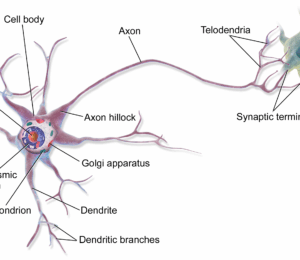Stochastic AI Agility: Breaking Cycles of Debt
- September 10, 2025
- 7256 Unique Views
- 4 min read
The launch of ChatGPT in November 2022 has significantly influenced and potentially transformed industry standards across multiple sectors. While my primary focus remains on the information technology sector, observations indicate that its impact extends across all industries and affects the daily lives of consumers and professionals alike.
This article examines the observed changes in project management practices. These observations are govern by Role 17: Stochastic AI Agility. Over past two decades, the industry has actively pursued the implementation of agile methodologies to enable iterative product delivery.
Figure 1. : Agile process schema connected to the AI-LLMs (blue lines and circles) and human knowledge based on experiences (blue bricks)
The fundamental principle involves decomposing all processes into smaller, manageable units that teams strive to execute with optimal efficiency. While this approach is particularly prevalent in information technology, its application extend beyond this sector. Throughout agile implementation, teams develop the capability to provide accurate delivery estimates--a notable challenging endeavor due to numerous contributing variables. These variables typically generate both visible and invisible technical debts that teams must address, potentially leading to diverse operational scenarios.
Forbes Technology Council has identified 16 obstacles[1] to a successful software project that affect virtually every chosen development scenario:
- Poor collaboration between the product and Engineering teams
- Not managing data integrity
- Not aligning early on the ‘must-haves’
- Overlooking nonfunctional requirements
- An Unintuitive UI
- Unexpected Complexities
- Missed Deadlines
- Understanding the time needed
- Scope creep
- An undefined project scope
- Unclear or undefined client expectations
- Overlooking speed, security or the UX
- Security as an afterthought
- Hyper-focused planning and design
- Undisciplined backlog grooming
- Unclear or incomplete product requirements document
The articles suggest to add one additional point which may be called
- Stochastic AI Agility
The designation “Stochastic AI Agility” indicates that the AI-LLM implementation consistently contributes toward project objectives, though the precise impact remains inherently unpredictable. The normal distribution curve may represent the degree of AI-LLM contribution across the most established phases --specifically, the core functional areas -- of product development.
Figure 2.: Agile Kandban schema with each stages connected to the AI-LLMs (blue lines and circles) and human knowledge based on experiences (blue bricks)
These scenarios are subsequently evaluated by management and technical staff with the objective of enhancing future iteration processes. The goal is to implement improved methodologies and alternative approaches in subsequent development cycles.
Figure 3.: Agile Scrum framework schema with each stages connected to the AI-LLMs (blue lines and circles) and human knowledge based on experiences (blue bricks)
This represents a sound strategic approach for future implementation. With the advancement and proliferation of Large Language Models (LLMs) solutions, virtually every stage of development or organizational evaluation may exhibit inherent bias, even when such bias is not immediately apparent.
Figure 4.: Waterfall schema with each stages connected to the AI-LLMs (blue lines and circles) and human knowledge based on experiences (blue bricks)
In my assessment, regardless of whether organizations currently employ agile methodologies (Figures 1-3) or traditional approaches (Figure 4), AI-LLM technology influences every phase of project development and methodological implementation. I recommend comprehensive research into agile frameworks, as the integration of LLM technologies, AI-assisted coding, or LLM-informed managerial decision-making may produce suboptimal outcomes with far-reaching consequences.
Point 17, Stochastic AI agility, represents a fundamentally stochastic process that may exhibit cyclical patterns driven by algorithmic bias in recommendations. This characteristic diminishes success probability in direct correlation with the degree of LLM dependency. LLM systems inherently lack consistency and operate non-deterministically.
Each inconsistency introduces technical debt of varying magnitudes. While this may not be immediately apparent, every project or objective constitutes a deterministic process with defined variance parameters, where incremental components are systematically constructed to achieve the desired outcome. Success depends on the level of granular complexity teams can effectively manage to develop these fundamental building blocks (Figure 6).
Figure 6.: Complex challenge and technical debt can be decomposed into manageable incremental units to facilitate goal achievement.
PS: If you are experiencing challenges or considering revision to current methodologies, I welcome the opportunity for collaborative discussion.
References:
[1] 16 Obstacles To A Successful Software Project (And How To Avoid Them)
[2] Stochastic AI Agility: addressing cycle of debts
Don’t Forget to Share This Post!













Comments (0)
No comments yet. Be the first.